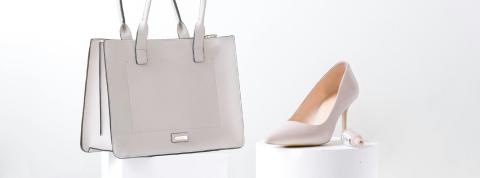
How do you establish a luxury pricing strategy?
Developing an appropriate pricing strategy in this sector requires a detailed understanding of market dynamics, consumer expectations and intrinsic brand values.
Sup de Luxe's Bachelor Luxe program offers unique expertise in understanding and mastering pricing strategies in the luxury sector. Thanks to teaching provided by experts and professionals in the field, students acquire the in-depth management and marketing skills they need to establish pricing policies adapted to high-end products.
What's more, the program draws on a solid international network and offers innovative modules to meet the expectations of key markets such as the United States and Asia. This comprehensive, professionalizing approach makes the program an ideal gateway to prestigious careers in the luxury goods industry.
What is the ultimate luxury pricing strategy ?
In the luxury sector, pricing strategy is often based on the principle of rarity and perceived value. Unlike other industries, the aim is not to reach a wide audience, but to attract a clientele ready to invest in unique, timeless products.
High luxury prices are not necessarily linked to manufacturing costs, but rather to symbolic value. Brands such as Hermès, Rolex or Chanel, for example, rely on a skimming strategy, aimed at captivating an elite in search of exclusivity. They also create artificial scarcity by limiting production, thereby reinforcing the sense of privilege associated with purchase. This approach not only preserves prestige but also protects margins, an essential aspect for luxury houses.
How the major houses play with price psychology
Luxury brands are masters of the art of price psychology. A number of subtle techniques can be used to enhance a product's appeal without compromising its exclusive character.
The round or prestigious prize
Unlike classic retail, where prices ending in “99” are common to catch the eye, luxury opts for rounded prices. A bag priced at 5,000 euros immediately evokes sophistication and stability, fundamental notions in this sector.
Rarity and urgency
Certain products are presented as limited editions or exclusive creations available for a limited time only. This strategy creates a sense of urgency and encourages impulse buying.
Tariff storytelling
Price is often associated with history or craftsmanship. A handcrafted piece, made from rare materials, justifies a high price tag, reinforcing the emotional bond with the consumer.
Customer segmentation
The major brands are also introducing differentiated ranges to appeal to different profiles, such as more accessible luxury accessories for younger consumers, while maintaining their flagship products at prices unaffordable to the majority.
How to set up a successful luxury pricing strategy
Analyze brand positioning
Each company must identify its values, its mission and the message it wishes to convey through its products. Pricing must reflect this DNA.
Study the market and the competition
Understanding how competitors set their prices is essential, without resorting to direct comparison. Luxury is all about unique differentiation.
Know your target
Identifying the expectations and buying behavior of your target clientele means you can better adapt your pricing strategy to their needs.
Play on perceived value
Effective communication of the product's quality, craftsmanship and authenticity can justify a premium price. Every detail, from packaging to customer service, must embody this value.
Test and adjust
Prices can be optimized by testing on specific segments or through customer feedback, while keeping the brand image intact.
Create global consistency
Pricing must be part of an integrated strategy, consistent with other brand elements such as distribution, communication and customer experience.
Pricing strategy in the luxury sector is much more than a simple matter of economic calculation. It is a powerful tool for conveying an image of prestige and reinforcing desirability.
By skilfully playing on perceptions, symbolic values and exclusivity, luxury brands can secure a lasting place in the minds of their customers. Developing a successful pricing strategy therefore requires a subtle blend of analysis, creativity and a deep understanding of the market and its challenges.
![[SUP DE LUXE] Portes ouvertes en ligne](/sites/supdeluxe.com/files/styles/img_style_16_9_540/public/images/116_Sup_De_Luxe_Shooting_2022_Arnaud-CAILLOU_Loeil-Temoin.jpg?itok=FMlcMviB)